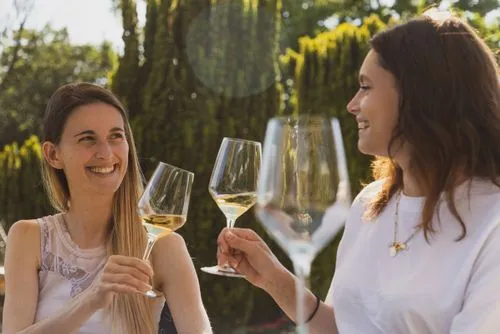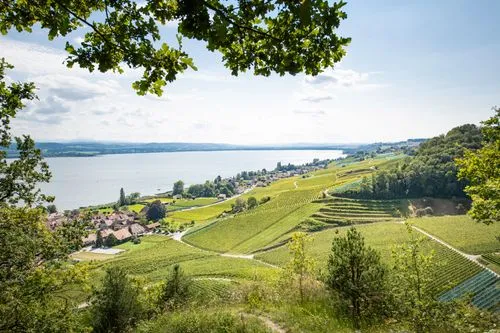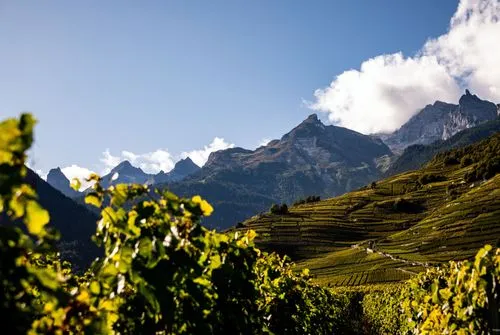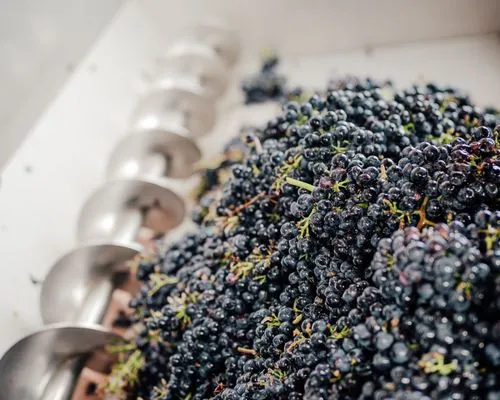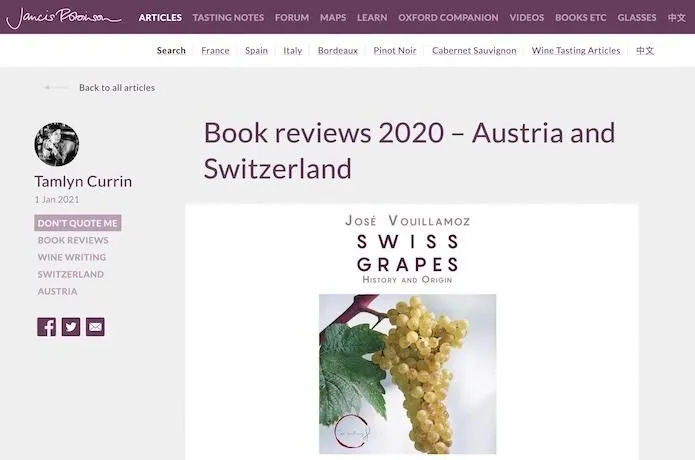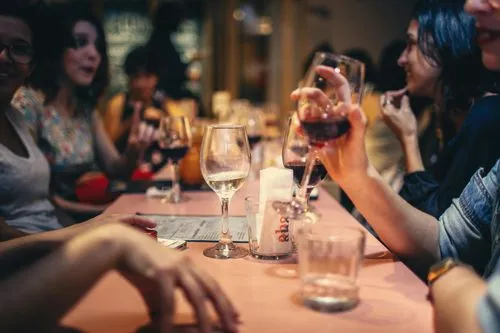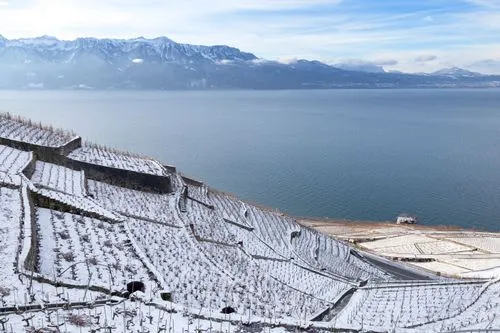Book Review of 'Swiss Grapes - History and Origin’
The author of this book needs no introduction to Purple Pagers (readers of JancisRobinson.com). As a co-author of ‘Wine Grapes’, a world authority on grape genetics and native of Switzerland, Dr Vouillamoz is the only person who could possibly have written this book. First published in French in 2017, this English version was copy-edited by Ellen Wallace, whose book, ‘Vineglorious’, I reviewed in 2016. It is a small, slim book that has such a simple elegance of design that you’d probably not notice it (unless, like me, you’d recently had to plough through several badly designed or just stodgily laid-out books).
In his introduction, Vouillamoz provides a rather startling picture of the grape varieties of Switzerland: on less than 15,000 ha (37,000 acres), the country is planted with 252 grape varieties. That’s roughly 18% of the world’s wine grape varieties on 0.02% of the world’s vineyard surface. As Vouillamoz remarks, ‘this is huge diversity, and perhaps even a world record'. No wonder he felt compelled to write about them.
Indigenous, traditional and allogenous grapes
Vouillamoz splits these varieties into three categories: indigenous, traditional (varieties present before 1900), and allogenous (varieties introduced after 1900). Although he does provide a full table of all 252 varieties, including details on the category each variety falls under, the surface area it’s planted to and where it’s planted, it’s the 80 indigenous varieties which are the subject of this book. These he has further divided into three groups, one per chapter: heritage grape varieties, crossings and hybrids.
In beautifully presented ‘variety sheets’, Vouillamoz gives, for each grape variety, a short description, main synonyms (names with historical significance and names used in Switzerland), historical records, DNA profiling, most plausible etymology, surface area in Switzerland, wine characteristics, production regions and recommended producers. The most significant varieties are accompanied by a cluster photograph, map (of origin and current locations) and family tree. Some of the heritage variety sheets also come with exquisite illustrations of each variety’s bunch and leaves from the famous Viala & Vermorel ampelography compiled between 1901 and 1910.
Kudos to Sedrik Nemeth who has taken some of the best bunch/cluster photographs I have ever seen. Achingly crisp and precise, they look so good they made my mouth water! The maps are clean, fine, just detailed enough and so easy to read. The family-tree diagrams are almost exquisitely simple and, bizarre as this sounds, they have a kind of austere beauty, uncluttered by so much as one unnecessary line or letter. Whoever was in charge of the design, layout and look of this book did a superb job.
Past and present
But perhaps what I least expected was the sense of awe I felt reading through this book. It was, in a strange way, like tiptoeing through the past encapsulated in the living present. These grape varieties, some of them on the verge of extinction, represent hundreds of years of tradition, community, human story, human spirit, travel, mountain survival. That the most cutting-edge science, in the form of DNA testing, can unfold the secrets of their origins, is something to be regarded with an almost sacred wonder. That they are still being made into wines today, to be poured, shared, tasted, discovered, seems to me to be nothing short of extraordinary. Magic. Science. Sometimes the line blurs.
If you’re lucky, and the deer haven’t eaten the grapes, Chanton Kellerei in Visp is making a dry wine and an Eiswein from Eyholzer Roter. There are just 0.21 ha (0.52 acre) planted. It is a red grape with genetic links to northern Italy, although Vouillamoz calls it an orphan variety. It tastes, he says, like no other wine. Low in alcohol, high in natural acidity, with hot-strawberry flavours, it is lovely to drink chilled. The sweet wine tastes of crème brûlée, marmalade and orange peel.
There is Grosse Arvine, just 0.08 ha (0.2 acre) left in the world, planted only in the commune of Fully in Valais. It was almost extinct but winemaker Oliver Pittet decided to revive it because he was intrigued by its history. The wines smell of cut hay, white peach and grapefruit, have bright acidity and a grainy texture. Other Fully winegrowers are now interested in planting it.
Grosse Arvine is a child of Rèze, one of the oldest grape varieties in Switzerland (mentioned in the 1313 Valais Registre d’Anniviers), which also turned up unexpectedly in Savoie in 2008 – a dozen old vines – and then again in the Jura, showing that it was once present in much of the Alps. This now-rare variety makes the very special Vin du Glacier in Valais.
Completer is another ancient variety that Vouillamoz is particularly enthusiastic about, making wines that smell aromatically sweet (quince, ripe apple, plum and honey) but taste bone dry and powerful. The first recorded mention of it is in 1321, and evidence suggests that it may have come to Switzerland from northern Italy, brought by Benedictine monks. The name, rather poetically, comes from Completorium or compline, the final evening service in which the monks were allowed to drink a glass of wine in silence. The original vino da meditazione, perhaps?
While the stories in chapters two and three, of the crossings and hybrids, may not be quite as romantic and hushed with the wonder of hundreds of years of history and survival, they are still rigorously detailed, interesting and valid. They provide as much a guide to 20th-century viticulture and science as a possible blueprint for the future when we may find ourselves turning more and more to varieties adapted to a changing climate.
The definition of a grape variety by an ampelographer
Aside from the ‘dictionary’, if you will, of Swiss varieties, Vouillamoz is at pains to clearly stake out a basis of ampelographic understanding for the beginner. He starts the book with the definition of grape variety – blindingly obvious to all of us wine lovers (we think), but, it turns out, something entirely different if you’re a geneticist or an ampelographer. Take Pinot Noir, Pinot Gris and Pinot Blanc, for example. Three different varieties, right? Nope. To the ampelographer and geneticist [or reader of Wine Grapes – JR], they are one and the same. Vouillamoz not only splices the (important, scientific) difference between variety and clone but he also explains the difference between hybrid and crossing.
Just in passing, some of the exciting work done by Swiss research station Agroscope includes the collection of some 300 Chasselas clones, 109 clones of Arvine, 1,800 clones for 24 varieties in Switzerland alone. That gave me goosebumps. Do we celebrate our scientists enough in the world of wine, I wondered?
This book is the work of someone with a fastidiously tidy, well-ordered mind. Throughout the book, I got such a strong sense of someone who is not only a scientist but a passionate educator, storyteller and evangelist. I don’t know José, despite his long and close working history with Jancis and Julia, so this was really my first connection. What struck me, quite deeply, was that this was written not just by someone terrifying intelligent and organised with a mission to communicate, but someone with a sense of beauty. Perhaps that is what makes this book come alive.
’Swiss Grapes - History and origin’
José Vouillamoz
www.josevouillamoz.com
Self-published
ISBN 9781729157442
$26.99, £21.82, CHF26
This article by Tamlyn Currin was first published by www.JancisRobinson.com on January 1st 2021 and reproduced here with the author's permission.
About Tamlyn Currin
Tamlyn Currin has been writing, editing and working behind the scenes for www.JancisRobinson.com for the last 13 years and has the WSET Level 4 Diploma in Wines and Spirits. She has a particular interest in sustainability, food-and-wine pairing, beverages other than wine, and artisan producers. Every year she pores over dozens of wine books, reviewing them with reverential respect for the time and sacrifice it takes to write a book, and ruthless attention to detail. She is Zimbabwean born and bred, but has spent the last 25 years living in the UK.
Pretium
Related Articles
All the news about Swiss wines and exclusive reports.
To visit our site, you must be of legal drinking age in your country of residence.
